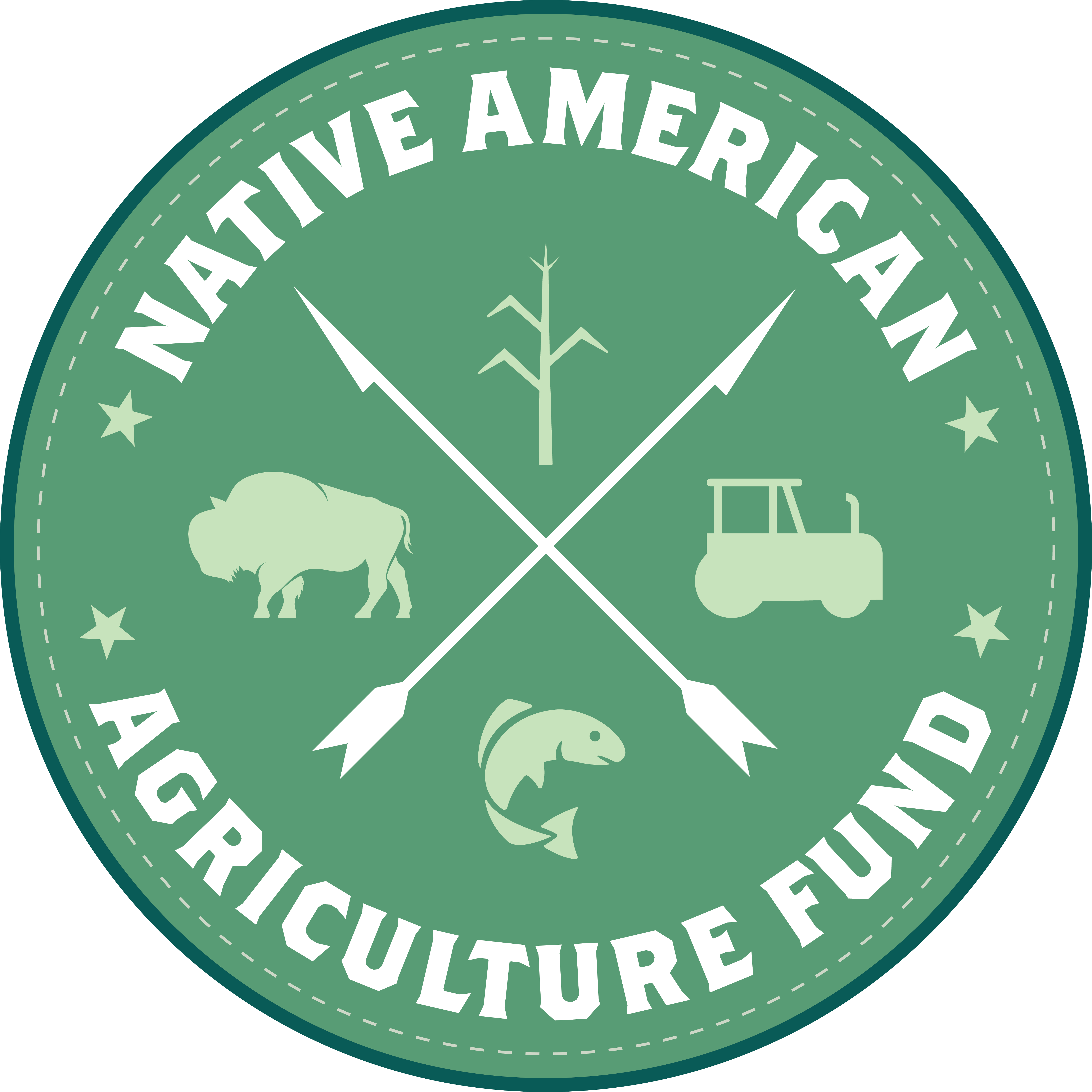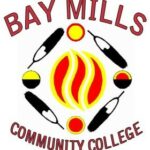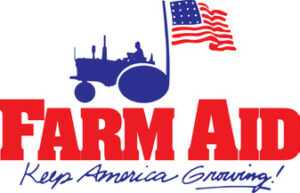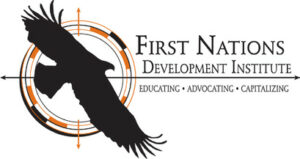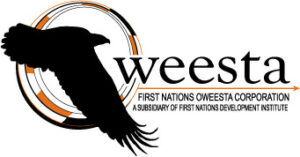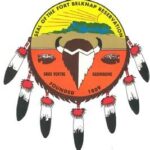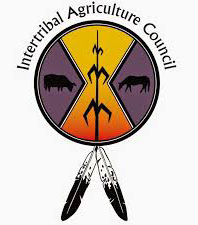Fast Track Grantees
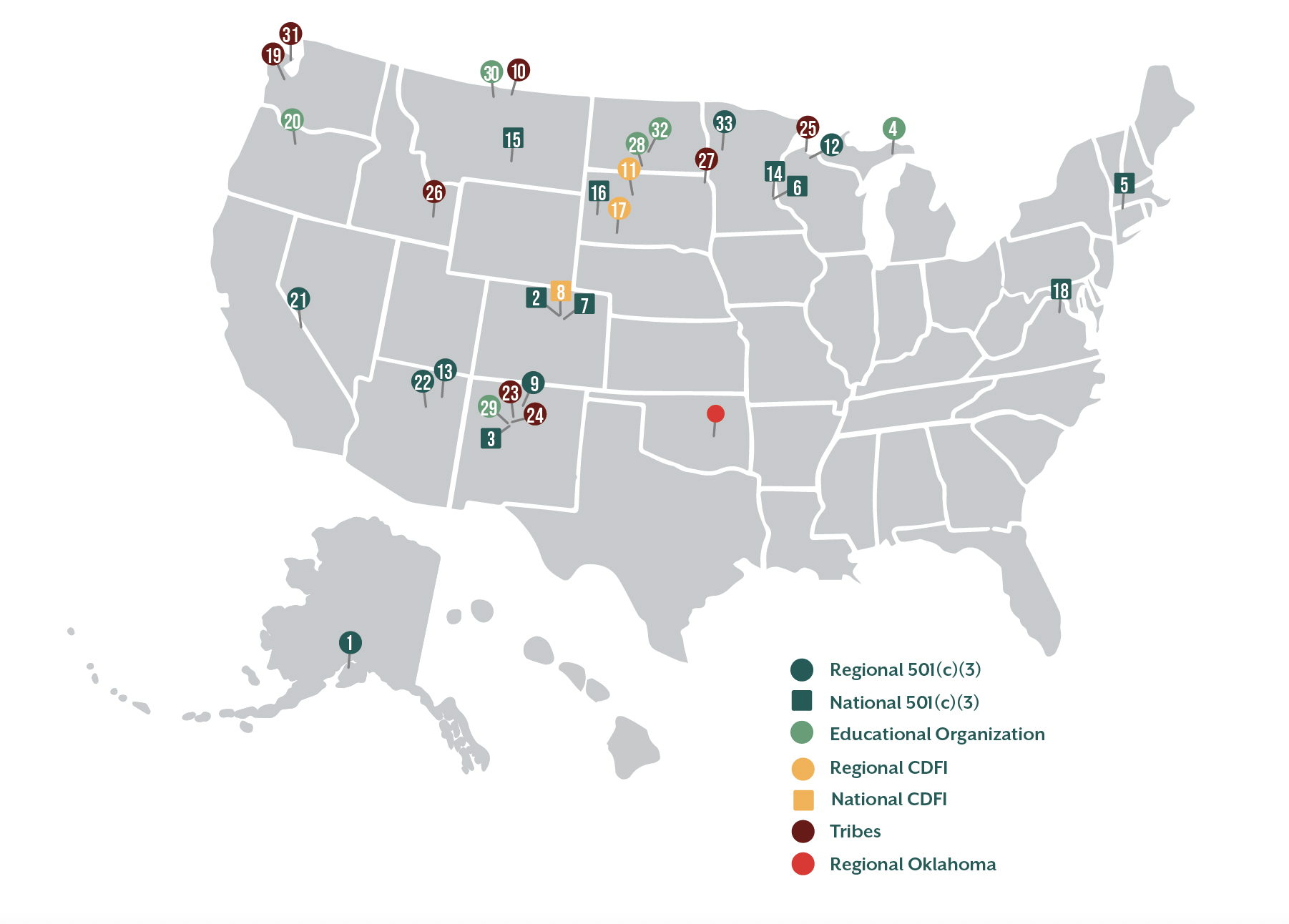
1. Alaska Village Initiatives
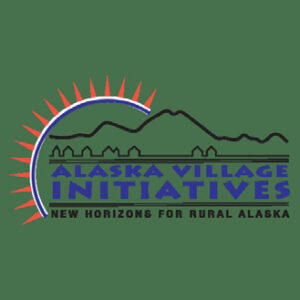
ANCHORAGE, ALASKA
$1.5 MILLION
Alaska Village Initiatives is a nonprofit that assists rural Native Alaskan villages and Alaska Native people, including advocating for their interests in federal legislation and providing loans to agriculture producers. Alaska Village Initiatives strives to reach every village, which can be challenging given the size of the state and the large language, cultural and geographic diversity.
The grant funding supports the creation of the Alaska Native Outreach and Assistance Project, which is engaged in providing capacity building and project grants, technical assistance, and outreach activities. The organization’s website – agAlaksa.net – provides a comprehensive set of tools and funding opportunities to assist Alaska Villages and Alaska Native Corporations. Future educational work will include assistance in the creation of a certificate program, a degree program, and a communities and local schools education program.
Resources from Alaska Village Initiatives:
a. Alaska Gardens https://agalaska.net/gardens/
b. High Tunnels https://agalaska.net/hoop/
c. Garden Tillage Preparation https://agalaska.net/gardens-3/
d. Funding Opportunities https://agalaska.net/funding/ (a good information hub but links to other websites)
2. American Indian College Fund
DENVER, COLORADO
$824,000
The American Indian College Fund is a nonprofit that provides scholarships and other support for Native American college students. The nonprofit administers more than 200 scholarship programs for Native American students at all educational stages. The nonprofit also provides comprehensive student success services and career readiness programs to help students be successful in
college and their careers.
The Fast Track funding supports the creation of Keepseagle Native American Fellowship scholarships for 40 Native American students studying farming- and agriculture-related fields at land grant institutions. The Native American Fellowship for Future Farmers and Ranchers will have two cohorts in the 2019-2020 and 2020-2021 academic years. Students will receive multi-year scholarship support, along with academic success and career readiness services, and internship and mentorship opportunities.
Resources from American Indian College Fund:
a. Additional Student Scholarships https://collegefund.org/students/additional-scholarships/ (provides links to various agriculture scholarships)
3. American Indian Science and Engineering Society
ALBUQUERQUE, NEW MEXICO
$714,508
The American Indian Science and Engineering Society (AISES) exposes Native students and their parents to science, technology, engineering and math in K-12 and higher education. The organization also provides college prep and career development services and partners with other organizations to conduct research
on STEM in Native communities.
AISES is using Fast Track funding to develop the Advancing Agricultural Science Opportunities for Native Americans program. This includes $5,000 scholarships and research grants for students studying agriculture-related fields during the 2019-2020 and 2020-2021 academic years. AISES received more than 200 applications for 30 scholarships.
Additionally, the funding will be used to create a cohort of 10 high school students, 20 undergraduate and graduate students, and 10 professional mentors to travel to related conferences and participate in AISES programs. Up to 10 undergraduate students in this latter cohort qualify for research grants of $5,000 per student per academic year.
Resources from American Indian Science and Engineering Society:
- Advancing Agricultural Science Opportunities for Native Americans (AASONA) Scholarship – https://www.aises.org/scholarships/aasona-scholarship-2020-2021
- Resource Center – https://www.aises.org/resource-center/publications
News Items:
- News and Events – https://www.aises.org/news
Social Media:
- Instagram – https://instagram.com/aises_hq
- YouTube – http://www.youtube.com/user/aiseshq
4. Bay Mills Community College
BAY MILLS TOWNSHIP, MICHIGAN
$298,503
The Bay Mills Community College, a tribally controlled college within the Bay Mills Indian Community, is one of four land grant institutions in Michigan and the only community college in Michigan’s Eastern Upper Peninsula. The college’s land grant activities focus on sustainable agriculture and food systems, health promotion, recruiting and retention, and community development. Bay Mills Community College operates Waishkey Bay Farm, a 40-acre training, research and incubator facility focusing on sustainable agriculture and food production that is consistent with traditional Anishinaabe values.
Bay Mills Community College received Fast Track funding to support the Land Grant Department and its programs. The funding allowed the department to increase the capacity of program staff and purchase new equipment for Waishkey Bay Farm. The new equipment will allow for safer and more up-to- date educational experiences for students. Funding will also help increase the number of classes available and establish a mentorship program, demonstration projects, workshops, internships and a summer youth experience.
Resources from Bay Mills Community College:
- Land Grant Department – https://www.bmcc.edu/about-bmcc/governance-administration/land-grant-department
- Waishkey Bay Farm – https://www.bmcc.edu/about-bmcc/community-services/waishkey-bay-farm
News Items:
- Bay Mills News – https://www.baymillsnews.com
- Michigan e-Library – http://mel.org/
5. Farm Aid
CAMBRIDGE, MASSACHUSETTS
$219,285
Farm Aid is a nonprofit that supports family farmers and ranchers and celebrates the essential role of food and agriculture in our lives. Farm Aid provides emergency grants to farm families in crisis and organizational grants to farm and rural organizations. It also runs the country’s only national farmer hotline, provides a Farmer Resource Network, facilitates a Farm Advocate Network and operates a Family Farm Disaster Fund.
Because Farm Aid does not receive many requests for assistance from Native American producers, the organization wants to reach more Native communities.The Fast Track funding is allowing Farm Aid to create a new program focused on and guided by the specific needs of Native American farmers and ranchers. This program will include establishing a Native American Advisory Board, providing advocacy training in 2020 in Native communities, and establishing resources to support Native farmers and ranchers.
Resources from Farm Aid:
- Supporting Family Farmers – https://www.farmaid.org/our-work/supporting-family-farmers/
- Resources For Farmers – https://www.farmaid.org/our-work/resources-for-farmers/
- 2019 Advocacy And Issues Report – https://www.farmaid.org/take-action/2019-advocacy-issues-report/
News Items:
- Stories – https://www.farmaid.org/stories/
- Our Work – https://www.farmaid.org/our-work/
Social Media:
- Instagram – https://instagram.com/farmaid
- YouTube – https://www.youtube.com/user/farmaid
6. Farmers Legal Action Group
SAINT PAUL, MINNESOTA
$692,213
The Farmers Legal Action Group (FLAG) is a national nonprofit law firm which provides legal services to family farmers and their communities. The organization’s mission is to keep family farmers on their land. FLAG provides education and outreach to farmers, operates a national legal hotline, analyzes policy, and participates in impact litigation.
With Fast Track funding, FLAG is establishing a Native American Agricultural Law Center, which will expand legal services to Native American farmers and ranchers and the advocates who serve them. FLAG is in the process of hiring two attorneys to work exclusively on Native farm and ranch issues. The new attorneys would be supported by FLAG’s four existing attorneys. Currently, FLAG’s Native hotline is live, with attorneys available to assist directly on non-litigation matters and review and provide advice on legal documents, such as contracts and loans.
In May 2019, FLAG will publish a new farmer’s guide for disaster assistance and will specifically target the delivery of the guide with trainings on the subject matter to Native farmers and ranchers. In the future, it will establish a separate website for the Native American Agricultural Law Center, publish a lending law guide and be able to customize legal training for Native audiences.
Resources from Farmers’ Legal Action Group:
- Publications Topics and Types – http://www.flaginc.org/topics/
News Items:
- News – http://www.flaginc.org/news/
- Awards and Testimonials – http://www.flaginc.org/about/awards/
7. First Nations Development Institute
LONGMONT, COLORADO
$7 MILLION
The First Nations Development Institute is a nonprofit organization which provides grants for economic development projects in Native communities, with an area of focus on food and agriculture. Grants are coupled with technical assistance and training to help strengthen organizations and individuals and ensure long-term success. Through 2018, First Nations has successfully managed 1,547 grants totaling more than $32.2 million for Native projects and organizations.
First Nations was awarded $7 million for its Native Agriculture and Food Systems Initiative, which includes the creation of a $5 million endowment to support its agricultural grant program. First Nations committed to giving 15% of grants to Oklahoma projects since no Oklahoma projects received cy pres funds.
In 2019, First Nations awarded grants averaging $39,000 to 17 organizations, and is providing technical assistance to grantees. Priority was given to projects aimed at expanding outreach and services to Native farmers, ranchers and producers, as well as organizations that can contribute to growing human capital and organizational capacity to increase the long-term sustainability and self-sufficiency of Native producers.
Additionally, the Fast Track funding is also being used to help build the capacity of Native producers. First Nations is hosting six Business of Indian Agriculture trainings over the next two years. The trainings are organized for producers (to share ideas and best practices as they develop business plans) and for train-the-trainer purposes. Travel scholarships are also being offered for attendance at the 2019 Food Sovereignty Summit.
Resources from First Nations Development Institute:
- Keepseagle Fast Track Grant Program – https://www.firstnations.org/projects/keepseagle-fast-track-grant-program/
- The Business of Indian Agriculture – https://www.firstnations.org/projects/the-business-of-indian-agriculture/
- First Nations Knowledge Webinar Series – https://www.firstnations.org/projects/first-nations-knowledge-webinar-series/
- Nourishing Native Foods and Health Publications – https://www.firstnations.org/knowledge-center/publications/nourishing-native-foods-health/#filters
News Items:
- Grantmaking – https://www.firstnations.org/grantmaking/
- News – https://www.firstnations.org/news/
- Legislative and Policy Updates – https://www.firstnations.org/news/?post-type=lp-updates
Social Media:
- Instagram – https://instagram.com/fndi303
8. First Nations Oweesta Corporation
LONGMONT, COLORADO
$1.5 MILLION
The First Nations Oweesta Corporation is the only Native- based Community Development Financial Institutions (CDFIs) intermediary providing technical assistance, financial support, training and related services to Native CDFIs across the country. Oweesta Corporation disbursed $55 million to Native CDFIs in 2017 alone. However, there is still huge unmet need for capital in Indian Country. A survey conducted by Oweesta Corporation found that there is nearly $56 million in unmet capital among Native CDFIs.
The Fast Track funding is being used for direct lending with the creation of the Native Fresh Food Fund, which supports Native CDFIs so they can provide increased capital and business development services for agricultural clients; capacity building, including a new webinar series; and support for Oweesta’s annual Capital Access convenings to provide financial education and technical assistance to clients.
Resources from First Nations Oweesta Corporation:
a. Trainings and Technical Assistance https://www.oweesta.org/our-services/native-cdfi-trainings-technical-assistance/
b. Lending and Capitalization https://www.oweesta.org/our-services/native-cdfi-lending-capitalization/
c. Publications and Webinars https://www.oweesta.org/native-cdfi-resources/publications-webinars/
d. Capital Access Convening https://www.oweesta.org/capital-access-convening/
9. Flowering Tree Permaculture Institute
SANTA CLARA PUEBLO, NEW MEXICO
$184,236
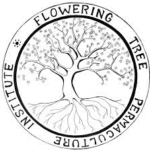
The Flowering Tree Permaculture Institute in New Mexico teaches classes on holistic techniques and methods of healthy agriculture and farming-based lifestyles. Located in the Pueblo of Santa Clara, the classes focus on community engagement; implementing patterns into agriculture, energy and other systems; health and nutrition; and traditional seed pottery.
The Institute received funding to expand its training programs in traditional agriculture and farming, including the use of greenhouses, bread ovens, fencing and animal rotation, seed saving, and similar efforts. The Institute is also using the funding to create a retreat center and campground where people can stay and learn about these traditional agriculture methods.
Resources from Flowering Tree Permaculture Institute:
News Items:
- Events and News – https://www.floweringtreepermaculture.net/products
- Pueblo Food Experience – https://vimeo.com/82926771
10. Fort Belknap Indian Community of Montana
HARLEM, MONTANA
$399,574
The Fort Belknap Indian Community has long operated a revolving loan fund for tribal members, and has established the Nakoda Aaniih Credit Agency to better coordinate tribal government support for agriculture. The grant funding went toward hiring an agribusiness resource liaison within the Farm and Ranch Services Bureau, as well as contributed toward the tribe’s revolving loan fund.
Rochelle LaMere was hired as the agribusiness resource liaison to help make smarter borrowers of the tribe’s agribusiness community. Her role is to help farmers and ranchers understand their financial wellness, become more financially sound, build their credit, and give them the tools and confidence they need to seek larger loans. The goal is to help farmers and ranchers think longer term and operate their farms and ranches like businesses.
Resources from Fort Belknap Indian Community:
- Business Registry –http://fortbelknapvendors.weebly.com/register.html
- Community Resources –https://fortbelknap.mpqhf.com/community-resources/
- Fort Belknap Connections –https://fortbelknap.mpqhf.com/
News Items:
- Announcements – https://ftbelknap.org/announcements
- Calendars – https://ftbelknap.org/calendars
11. Four Band Community Fund
EAGLE BUTTE, SOUTH DAKOTA
$350,097
The Four Bands Community Fund is a Native Community Development Financial Institution active on the Cheyenne River Sioux Reservation in South Dakota. Over the past 19 years, Four Bands has deployed $12 million in loans to Cheyenne River tribal members and Native Americans in South Dakota.
The fund received support for a pilot program combining business development and financial literacy coursework with technical assistance and capital for agricultural loans. Four Bands finds a good balance between coaching and technical assistance to ensure the success of their clients.
Resources from Four Bands Community Fund:
a. For Entrepreneurs https://fourbands.org/category/for-entrepreneurs/
i. Business Loans https://fourbands.org/programs/for-entrepreneurs/business-loans/
ii. Training and Coaching https://fourbands.org/programs/for-entrepreneurs/training-coaching/
12. Great Lakes Indian Fish & Wildlife Commission
ODANAH, WISCONSIN
$147,637
The Great Lakes Indian Fish & Wildlife Commission (GLIFWC) serves 11 Ojibwe tribes with natural resource management, conservation enforcement and policy advocacy. The Fast Track funding helped build tribal capacity for small scale food processing and community food systems to support subsistence, cultural and commercial utilization of treaty rights.
The grant funded technical assistance and the purchase of processing equipment for tribal wild rice harvesters. The funding also supports the commission as it launches a needs assessment survey to identify what programs exist and what is needed to best serve the agricultural producers of the 11 tribes the commission serves. Finally, GLIFWC used the funding to develop Mino Wiisinidaa, a cookbook with 65 recipes gathered from elders that features traditionally harvested foods.
The next steps for GLIFWC is to develop model traditional food codes for its member tribes to develop self-regulatory capacity, and to conduct pilot projects with youth to introduce them to traditional food and harvesting.
Resources from Great Lakes Indian Fish & Wildlife Commission:
- Mino Wiisinidaa Cookbook – http://www.glifwc.org/publications/#Cookbook
- Reports – https://data.glifwc.org/reports/
- Educational materials – http://www.glifwc.org/publications/
- GIS Maps – http://maps.glifwc.org/
News Items:
Social Media:
- YouTube – https://www.youtube.com/user/glifwc
13. The Hopi Foundation
KYKOTSMOVI VILLAGE, ARIZONA
$1 MILLION
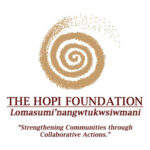
https://www.natwanicoalition.org/
The Hopi Foundation is a Native-led nonprofit that supports self- sufficiency, self-reliance and local self-determination for the Hopi Tribe. Because agriculture is a tradition for the Hopi people, the foundation created the Natwani Coalition, which preserves and strengthens the healthy food system and agriculture traditions of the Hopi and Tewa people.
The Hopi Foundation used the Fast Track funding to create two separate community grant programs to be awarded over the next two years. The grants will promote sustainable agriculture, increase availability of fresh produce, support the growth and preservation of local food production, and restore food self-sufficiency.
In 2019, $37,500 is available for local food producers, farmers, growers and ranchers with awards ranging from $500 to $2,000. An additional
$150,000 is available for partnership capacity grants, which will vary from $10,000 to $25,000. The grants are available in three cycles (Early Planting, Big Planting and Harvest), following traditional agricultural calendars. More grant funding will be available in 2020. Grantees report on their progress, attend workshops, prepare a site visit and showcase their projects at the annual Hopi Symposium.
Resources from Hopi Foundation:
- Hopi Heirloom Seed Initiative –https://www.natwanicoalition.org/hopi-heirloom-seeds
News Items:
- Sister Programs – https://www.natwanicoalition.org/sister-programs
Social Media:
- Instagram – https://instagram.com/natwani_coalition
14. Indian Land Tenure Foundation
LITTLE CANADA, MINNESOTA
$2.2 MILLION
The Indian Land Tenure Foundation (ILTF) is a Native-led national foundation which works to restore Native American land to the control of Native Americans. ILTF has distributed $52 million in grants aimed at land recovery and land management issues; manages 24 funds; and serves as a fiscal agent.
ILTF believes that the more active and vibrant the Native agricultural community is, the more likely Native Americans will be able to recover more land within original reservation boundaries and areas of high cultural significance.
The Fast Track funding supports ILTF’s regranting of $1.4 million to Federally Recognized Tribe Extension Programs (FRTEPs). The first round of grants has been made to 35 units through a corresponding university. A second round of supplemental grants will be made to each site. Additionally, the Fast Track funding will support the creation of 650 wills and other estate documents for Native American farmers and ranchers, 35 Native landowner trainings, and 12 co-owner management meetings.
Resources from Indian Land Tenure Foundation:
a. Resources https://iltf.org/
b. Grants https://iltf.org/grants/
c. Special Initiatives https://iltf.org/special-initiatives/
15. Intertribal Agriculture Council
BILLINGS, MONTANA
$8.9 MILLION
The Intertribal Agriculture Council (IAC) is a nonprofit established by Congress to address and provide solutions to the barriers facing Native American farmers and ranchers. Because the average age of farmers and ranchers in the United States is 57 and rising, farm debt is increasing by 4% per year, and farm suicides are at an all- time high, IAC recognizes that major change is needed to ensure the continuation and growth of Native agriculture. It views the Fast Track funding as a once-in-a-lifetime opportunity to enhance the sustainability of the organization’s mission.
IAC received Fast Track funding for multiple projects, including the creation of a nationwide Community Development Financial Institution to provide agricultural investments, grantmaking to Native youth involved in agricultural projects and the formation of an endowment to support the organization’s work. The Fast Track funding also allowed them to hire an additional technical assistance specialist in Oklahoma.
The CDFI’s role is to set clients up for success and break the debt cycle that agribusinesses often find themselves in. So far, the CDFI has funded livestock, buildings, vehicles and more.
Resources from Intertribal Agriculture Council:
a. Programs https://www.indianag.org/programs
i. Technical Assistance Program https://www.indianag.org/technicalassistance
ii. American Indian Foods https://www.indianag.org/americanindianfoods
iii. Natural Resources https://www.indianag.org/naturalresources
b. Akiptan CDFI Programs https://www.akiptan.org
16. Intertribal Buffalo Council
RAPID CITY, SOUTH DAKOTA
$1 MILLION
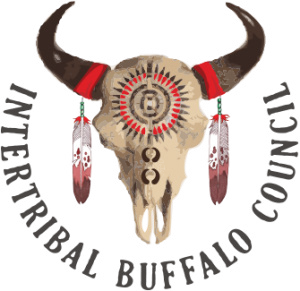
https://itbcbuffalonation.org/
The Inter-Tribal Buffalo Council is a federally chartered Indian organizatoin committed to restoring bison to tribal lands. The organization manages 20,000 animals across 1 million acres and provides services to 68 member tribes across 19 states, serving almost 900,000 enrolled tribal members.
The Fast Track funds are being used in its Herd Development Grant program, specifically supporting applications related to the business of buffalo ranching. Half of the funds were distributed in 2019 to 23 tribes, with individual grants ranging from $35,000-$75,000 per tribe. Many tribes utilized the funding for prairie restoration, corral maintenance, and creating or improving handling facilities. Others created outdoor classrooms, supported cultural revitalization programs, conducted scientific research or developed marketing plans to sell buffalo products.
Resources from Inter-Tribal Buffalo Council:
a. Technical Services https://itbcbuffalonation.org/who-we-are/297-2/
b. Herd Development Grant https://itbcbuffalonation.org/herd-development-grants/
17. Lakota Funds
KYLE, SOUTH DAKOTA
$2.6 MILLION
![]()
Lakota Funds is a Native-led Community Development Financial Institution (CDFI) which operates on the Pine Ridge Reservation in South Dakota. The CDFI provides loans, training and technical assistance to support ag-related businesses and promote sustainable gardening businesses. Since 1986, Lakota Funds has deployed
$13 million in business loan capital and assisted more than 600 businesses, creating or sustaining 1,850 jobs.
The nonprofit was granted Fast Track funding to support new agriculture business opportunities for Oglala Sioux tribal members and Native American farmers, ranchers and gardeners across the region. This includes hiring a full-time dedicated agriculture loan officer, setting up an agriculture lending advisory group, providing loans to farmers, ranchers and gardeners to start or expand their operations, and providing customized business training and coaching support for farmers, ranchers and gardeners.
Since September 2018, the Lakota Funds has assisted 19 producers with loan capital to start up or expand operations, approved more than $585,000 in loans, provided more than $7,400 in equity investment grants to six borrowers, and conducted four trainings on agriculture business planning and accounting.
Resources from Lakota Funds: https://lakotafunds.org/
a. Resource Center https://lakotafunds.org/resource-center/
b. Business Loans https://lakotafunds.org/business-loans/
c. Business Training and Coaching https://lakotafunds.org/business-training-coaching/
d. Financial Literacy Training https://lakotafunds.org/financial-capability/
18. National Congress of American Indians
WASHINGTON, D.C.
$388,941
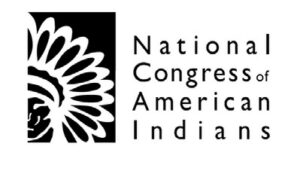
The National Congress of American Indians (NCAI) is the oldest and largest organization serving the broad interests of American Indian and Alaska Native tribal governments and communities. The organization received funding to support the launch of a Tribal Food Sovereignty Advancement Initiative, which will develop a substantial, in-depth report on how to improve the administration of and access to federal land and agriculture programs for Native farmers and ranchers.
Resources from National Congress of American Indians: http://www.ncai.org/
a. Tribal Food Sovereignty Advancement Initiative http://www.ncai.org/initiatives/partnerships-initiatives/food-sovereignty
b. Resources http://www.ncai.org/resources
c. Agriculture Policy Issues http://www.ncai.org/policy-issues/land-natural-resources/agriculture
19. Nisqually Tribe
OLYMPIA, WASHINGTON
$514,234
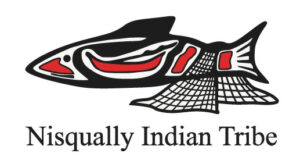
The Nisqually Tribe is located in Washington, and its traditional agricultural activities revolve around salmon fishing. The tribe received funding to help improve its existing hatchery, and to develop a new facility in order to establish a new fishery area on another creek. The Nisqually Tribe provided a 100% match for the grant.
The high protein salmon meat has sustained the vibrant Native population for generations. Currently 10% of Nisqually tribal members receive a significant portion of their income from salmon fishing, and the remaining 90% benefit from the aquaculture industry surrounding salmon fishing.
An engineering firm is currently designing the hatchery expansion with modern water treatment technology. Mechanical and ultraviolet light filtration will reuse water to improve water quality and act as a buffer from climate change.
The project is expected to be completed within three years.
Resources from Nisqually Indian Tribe: http://www.nisqually-nsn.gov/
a. She-Nah-Nam Seafood https://shenahnamseafood.com/
b. Clear Creek Hatchery http://www.nisqually-nsn.gov/index.php/administration/tribal-services/natural-resources/salmon-recovery-program/clear-creek-hatchery/
c. Community Garden Program http://www.nisqually-nsn.gov/index.php/administration/tribal-services/community-services/community-garden-program/
20. Oregon State University – Warm Springs Extension
WARM SPRINGS, OREGON
$370,266

Oregon State University has a long history of working with farmers and ranchers from the Confederated Tribes of Warm Springs. The university received Fast Track funding to help create a new program, called Growing the Next-Gen: Strengthening Tribal Agriculture on the Warm Springs Reservation, for tribal members interested in beginning a small-scale agricultural endeavor.
In June 2019, a cohort of 10 tribal adults will receive $10,000 start-up grants for their agriculture operation. The cohort will participate in the Growing Farms online course through Oregon State, which results in the creation of an agriculture business plan. Additionally, 10 youth who receive USDA Farm Service Agency youth loans can receive up to a 100% loan match later in 2019. The youth cohort will visit area farms and receive tractor certification. The Fast Track funding will also help upgrade equipment at the Warm Springs Tribal Farm so they can create square bales of hay, opening up a new market for the farm.
Resources from Oregon State University – Warm Springs Extension: https://extension.oregonstate.edu/warmsprings
a. Online Resources and Activities https://extension.oregonstate.edu/warmsprings/online-resources-activities
b. Food Preservation https://extension.oregonstate.edu/warmsprings/food-preservation
c. Forestry and Natural Resources https://extension.oregonstate.edu/deschutes/forestry-natural-resources
21. Owens Valley Indian Water Commission
BISHOP, CALIFORNIA
$428,720
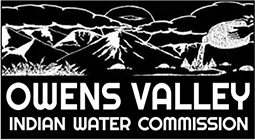
The Owens Valley Indian Water Commission is a consortium of three tribes in California: the Bishop, Big Pine and Lone Pine Paiute tribes. The Owens Valley watershed supplies the City of Los Angeles with 70% of its drinking water, which has resulted in the collapse of agriculture in the area. Plant roots cannot be sustained, air and dust pollution is at an all-time high, and traditional Paiute irrigation practices have been discouraged.
The Native agriculture that can be accomplished in Owens Valley is on a micro-scale. Tribal members operate community gardens, traditional and aquaponic nurseries, apiary productions, cattle herds, egg production, orchards, and community markets and farm stands.
The Commission received Fast Track funding to provide hands-on training, technical assistance, regranting and equipment purchases for individual Native American farmers and ranchers, as well as member tribes, to support sustainable agriculture, permaculture design, best management practices, contract formation and agriculture business startup services. The funding will also go toward repairing a half-mile of irrigation pipeline on the Big Pine reservation and enabling Native youth to participate in local 4-H programs.
Resources from Owens Valley Indian Water Commission: http://www.oviwc.org/
a. Youth 4-H/FFA Scholarship Opportunity http://www.oviwc.org/youth-4-h-ffa-scholarship-opportunity/
22. Painted Desert Demonstration Projects
FLAGSTAFF, ARIZONA
$263,278
Painted Desert Demonstration Projects is a nonprofit that runs the STAR charter school, serving Navajo families. The K-8 elementary school is the first charter school in the United States entirely powered by solar and wind energy. Painted Desert Demonstration Projects also includes the North Loop Family farms, a tribally run cooperative farm, and the Hopi Tutskwa Permaculture Project.
Most of the Navajo Nation is in a food desert. The organization received Fast Track funding to create a North American Regional Food Hub on the tribe’s reservation, providing better opportunities for local farmers to sell their produce. The program also includes workshops that provide the needed certifications for local Native farmers to sell produce to the STAR school and other reservation schools. Additionally, the Fast Track grant funded new Waterbox purification systems and a program for Hopi youth to apprentice with traditional farmers.
23. Pueblo of San Felipe
ALBUQUERQUE, NEW MEXICO
$239,880

Agriculture has played an important role in everyday life for the Pueblo of San Felipe in New Mexico. The tribe conducted a food sovereignty assessment in 2016-2017, which noted that 60% of the Pueblo’s citizens farm (compared to 1% of people in the United States). The assessment also found that 63% of tribal families experience food insecurity.
The Pueblo received Fast Track funding to expand and improve its agriculture program by hiring a new program coordinator. It also received funding to provide new fencing for individual farmers, seed Native grasses, construct wells and install new solar pumps for watering stations, and provide summer internships to youth.
The tribe’s natural resources department hosts interns with support from Fast Track funding, Indian Land Tenure Foundation, Environmental Protection Agency and Bureau of Indian Affairs. The internships allow the young people of San Felipe to understand their community and the challenges it faces, and to develop their own solutions for these challenges.
Resources from Pueblo of San Felipe: https://sfpueblo.com/
a. Natural Resources Department https://sfpueblo.com/departments/natural-resources
24. Pueblo of Sandia
ALBUQUERQUE, NEW MEXICO
$363,900
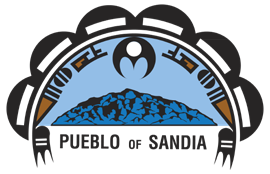
The Pueblo of Sandia in New Mexico has a tribal culture deeply rooted in irrigated agricultural practices and growing traditional foods. The tribe received funding to rehabilitate on-farm concrete irrigation ditches, which will upgrade approximately 20 miles of on-farm water delivery infrastructure.
Resources from Pueblo of Sandia
a. Lands Department https://sandiapueblo.nsn.us/lands/
i. Bison Program https://sandiapueblo.nsn.us/bison-program/
b. Environment Department https://sandiapueblo.nsn.us/environment/
25. Red Cliff Band of Lake Superior Chippewa Indians
BAYFIELD, WISCONSIN
$595,000

Commercial fishing is the cornerstone of the Red Cliff Band of Lake Superior Chippewa Indians’ reservation economy in Wisconsin, but it has failed to meet its economic potential. The lack of a facility to process the catch means that nearly all harvest is sold off-reservation to non-tribal wholesalers, resulting in the loss of local control and the inability of the tribe to maximize the value of the catch through distribution, retail sales and value-added products.
With funding from USDA Rural Development, Red Cliff conducted a feasibility analysis for a fish processing facility. The Fast Track funding provided Red Cliff the capital needed to build the facility, allowing tribal members to process their own fish before selling their product. The facility is expected to be operational in 2020.
Mino Bimaadiziiwin, Red Cliff ’s organic farm, will benefit from the fish processing facility. Fresh produce from the farm will be incorporated into fish products sold in grocery stores, and the farm will make compost out of fish waste.
Red Cliff is using the Fast Track funding to leverage additional funding, with grant applications submitted to the Indian Community Development Block Grant Program (ICDBG), USDA Rural Business Development and Administration for Native Americans – Social and Economic Development Strategies (ANA-SEDS).
Resources from Red Cliff Band of Lake Superior Chippewa Indians http://redcliff-nsn.gov/
26. Shoshone-Bannock Tribes
FORT HALL, IDAHO
$317,545

The Shoshone-Bannock Tribes in Idaho have a 549,000-acre land base of which 410,000 acres is dedicated to farming and ranching. With a rich history in agriculture, the tribes have a robust farming system and land management practice. However, much of the land is leased by non-Native farmers. The tribes are encouraging more tribal members to farm and ranch.
The tribe’s agriculture-based programs are scattered throughout various tribal buildings, which can be challenging. The tribe seeks to combine its programs into one Land Use Resource Range and Agriculture Complex, which would include classrooms, lab space, community outreach programs, technical assistance, permitting and licensing. The site selection has been completed, and the Fast Track grant is funding the design, engineering and architecture of the complex.
Resources from Shoshone-Bannock Tribes:
a. Land Use Department http://www2.sbtribes.com/land-use/
b. Fish and Wildlife Department http://www2.sbtribes.com/fish-and-wildlife/
c. Tribal Water Resources http://www2.sbtribes.com/water-resources-department/
27. Sisseton Wahpeton Oyate
AGENCY VILLAGE, SOUTH DAKOTA
$627,785
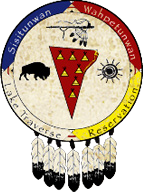
The Sisseton Wahpeton Oyate tribe of South Dakota received funding for the development of an incubator farm to assist tribal members in launching their own farms. The majority of the land on the Lake Traverse Reservation is leased to non-Indian operators. Currently there are 10 tribal members who are livestock producers and two who farm smaller acreages. The tribe also owns and operates a buffalo farm and fishery.
Fast Track funds are being used for a farm incubator program with seven one-acre plots to train interns and new producers as they produce food, share equipment, develop their markets and learn from mentor farmers, agriculture professionals and each other. Then, once their businesses are viable, the new producers would move off the incubator farm and find their own land to farm. The Sisseton Wahpeton Oyate received significant interest in the farm incubator program at a workshop held in April.
The tribe’s long-term goal is to establish a formal tribal farmer cooperative association to provide ongoing services and support to individual tribal farmers and producers.
Resources from Sisseton Wahpeton Oyate: https://www.swo-nsn.gov/
a. Dakota Western https://www.swo-nsn.gov/businesses/dakota-western/
b. Land Management Department https://www.swo-nsn.gov/departments/land-management-department/
c. Natural Resources Department https://www.swo-nsn.gov/departments/natural-resources-department/
d. Office of Environmental Protection https://www.swo-nsn.gov/departments/land-management-department/office-of-environment-protection/
28. Sitting Bull College
FORT YATES, SOUTH DAKOTA
$549,396
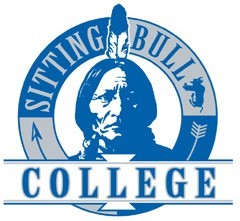
Sitting Bull College is a tribal college that serves the Standing Rock Sioux Reservation in South Dakota. Funding supports the creation of a Shared Equipment Program that allows the college to purchase and maintain agricultural equipment, which it can then rent to Standing Rock Sioux tribal members.
Resources from Sitting Bull College: https://sittingbull.edu/
a. Tribal Business Information Center https://sittingbull.edu/tribal-busines-information-center/
b. Science, Technology, and Agriculture Resources https://sittingbull.edu/sitting-bull-college/students/library/science-technology-and-agriculture/
c. Extension Education https://sittingbull.edu/sitting-bull-college/programs/extension-education/
29. Southwestern Indian Polytechnic Institute
ALBUQUERQUE, NEW MEXICO
$1.5 MILLION

The Southwestern Indian Polytechnic Institute (SIPI) is a land grant college operated by the Bureau of Indian Education. More than 60 different tribes are represented on the campus, with 60% of the student body being Navajo. The college features a Natural Resource Management Program, which encompasses both agri- business and crop and soil science.
The nonprofit was awarded funding for three projects that create a nexus of agriculture resources: (1) shifting the focus of the Land Grant Office to sustainable agriculture; (2) converting its existing greenhouse into an Agricultural Training Complex to conduct research through customizable growing environments, among other activities; and (3) creating an Indian Food Hub to actively manage the marketing and distribution of agricultural products.
Resources from Southwestern Indian Polytechnic Institute: https://www.sipi.edu/
a. Special Programs (Grants) https://www.sipi.edu/apps/pages/index.jsp?uREC_ID=829033&type=d&pREC_ID=1208797
b. Natural Resources Management Associate of Applied Science Degree https://www.sipi.edu/apps/pages/NaturalResource
30. Stone Child College
BONEAU, MONTANA
$188,804
![]()
Stone Child College is a tribal college serving the Rocky Boy’s Reservation in Montana. Of the 6,000 people who reside on the reservation, only about 2% are agricultural producers. The tribe operates an enterprise farm on 40,000 acres of the 153,000-acre reservation.
The tribe sought to develop the agricultural skills of its people to provide economic opportunities. Stone Child College received Fast Track funding to develop a new one-year Agricultural Technician Certificate training program. The college also used funding to purchase a tractor, swather and baler to share with small producers on the reservation.
31. Suquamish Indian Tribe
SUQUAMISH, WASHINGTON
$400,000

The Suquamish Indian Tribe, a tribe in the Pacific Northwest, owns Suquamish Seafood Enterprises, a separately charted private company. All of the company’s revenue is generated off of treaty rights harvesting and is distributed tax-free to tribal elders. The Suquamish tribe works with neighboring tribes to manage their resources and ensure they are sustainably harvesting seafood in the Puget Sound.
The Suquamish tribe received Fast Track funding to purchase a new dive boat that will allow tribal members to harvest geoduck clams for domestic consumption and export. The 49-foot vessel will sustain the Suquamish tribe for 20 to 30 years. The first harvest will be in June 2019.
Resources from Suquamish Indian: Tribe https://suquamish.nsn.us/
a. Fisheries Department https://suquamish.nsn.us/home/departments/fisheries/
b. Natural Resources Department https://suquamish.nsn.us/home/departments/natural-resources/
32. United Tribes Technical College
BISMARCK, NORTH DAKOTA
$821,225
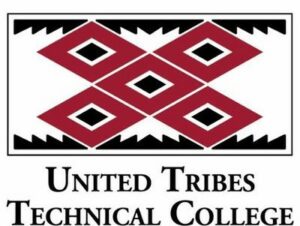
The United Tribes Technical College is a tribal college owned and operated by the five tribes of North Dakota. The Fast Track grant supported the creation of the Native Farm Initiative, which established an applied associate of science (AAS) degree in sustainable agriculture and food systems. The campus farm will be used as the classroom to provide an experiential, interdisciplinary and culturally based experience. Students receive a $1,000 per month stipend and learn technical skills, but also carry out the mission of extension through education, research and community engagement.
Students will conduct research projects to determine how institutionally supported, community engagement-focused garden programs can benefit the institution and its community members. In addition, the funding provides stipends for agricultural students, summer internships, online classes, various demonstration projects and the creation of an on-campus greenhouse complex.
United Tribes Technical College has received additional funding from the USDA Beginning Farmer and Rancher Development Program and American Indian Higher Education Consortium.
Resources from United Tribes Technical College: https://uttc.edu/
a. Land Grant/Extension https://uttc.edu/land-grant-extension/
b. Intertribal Research and Resource Center https://uttc.edu/irrc/
c. Sustainable Agriculture and Food Systems https://uttc.edu/academic-affairs/sustainable-agriculture-food-systems/
d. Agriculture Archives https://uttc.edu/category/educational-resources/agriculture/
33. White Earth Land Recovery Project
CALLAWAY, MINNESOTA
$183,163

The White Earth Land Recovery Project (WELRP) is a Minnesota-based tribal project that seeks to increase food security and revitalize Anishinaabe culture on the White Earth Reservation. WELRP received Fast Track funding to increase support for Native growers and producers through several programs.
The Seed Keepers Network, which received part of the funding, teaches local producers how to save their seeds and how to preserve the foods they grow. The project distributes starts, seeds and heritage seeds at the beginning of the growing season and holds seed swapping events.
WELRP also used Fast Track funding to create a White Earth Farmers and Producers Association, Corn Growers Association and Maple Syrup Association to promote Native leadership and peer-to-peer support. WELRP also gave grants to purchase needed agricultural supplies and equipment and provided training and services to small-scale Native producers. Finally, Fast Track funding was used to sponsor 32 scholarships to WELRP’s Indigenous Farming Conference and grow the conference to be self-sustaining.
Resources from White Earth Land Recovery Project: https://www.welrp.org/
a. Indigenous Farm to School Curricula https://www.welrp.org/about-welrp/food-sovereignty/indigenous-farm-to-school-curricula/
b. Indigenous Seed Library https://www.welrp.org/about-welrp/indigenous-seed-library/
c. Great Lakes Indigenous Farming Conference https://www.welrp.org/indigenous-farming-conference/
d. Energy Justice https://www.welrp.org/about-welrp/energy-justice/
